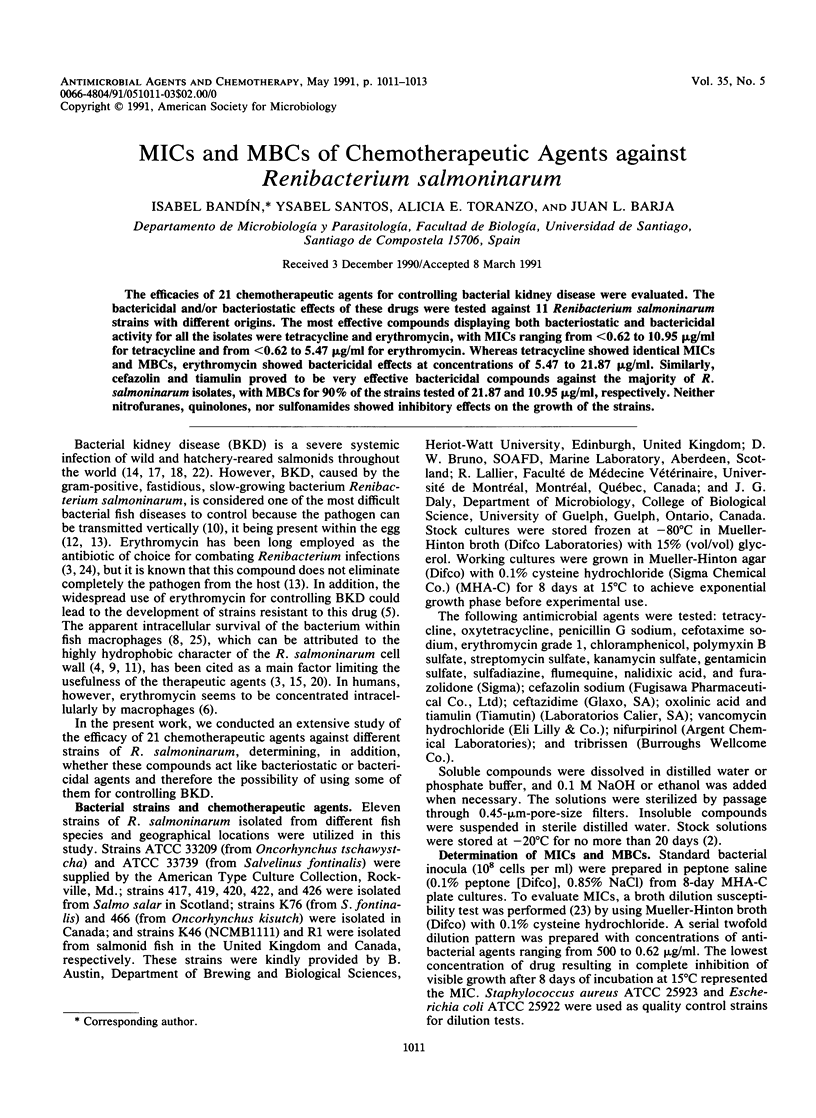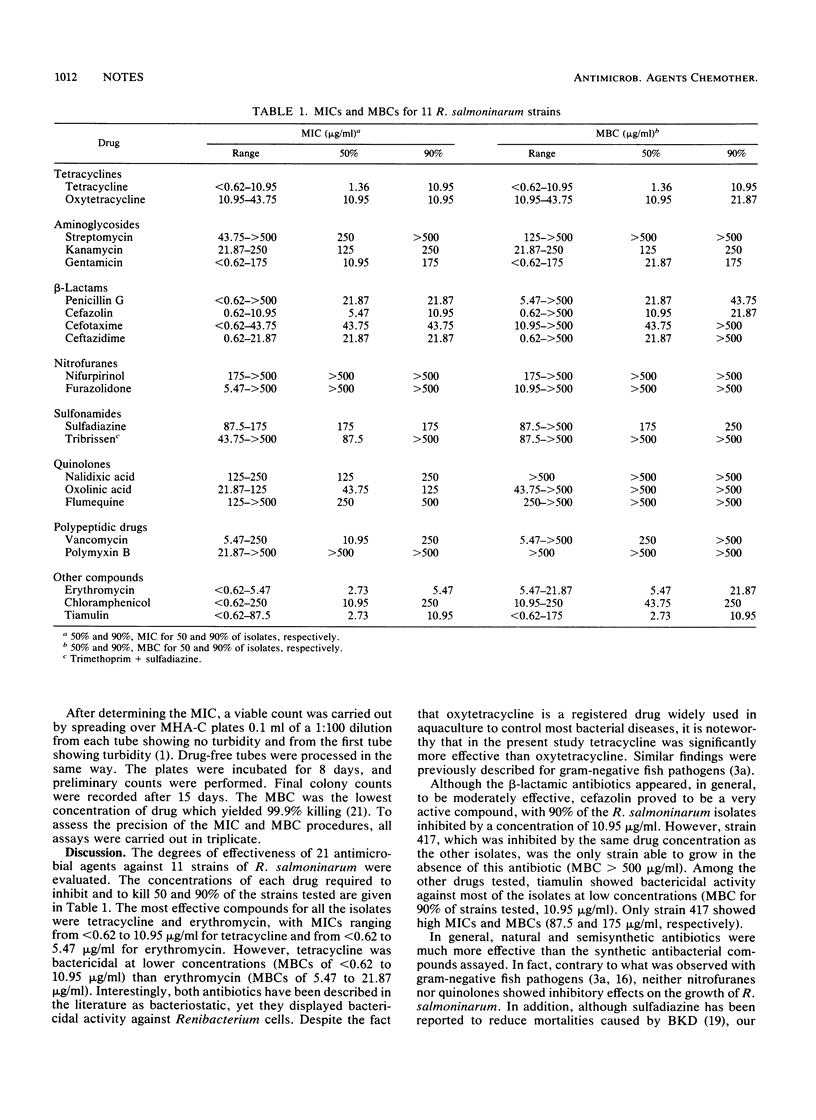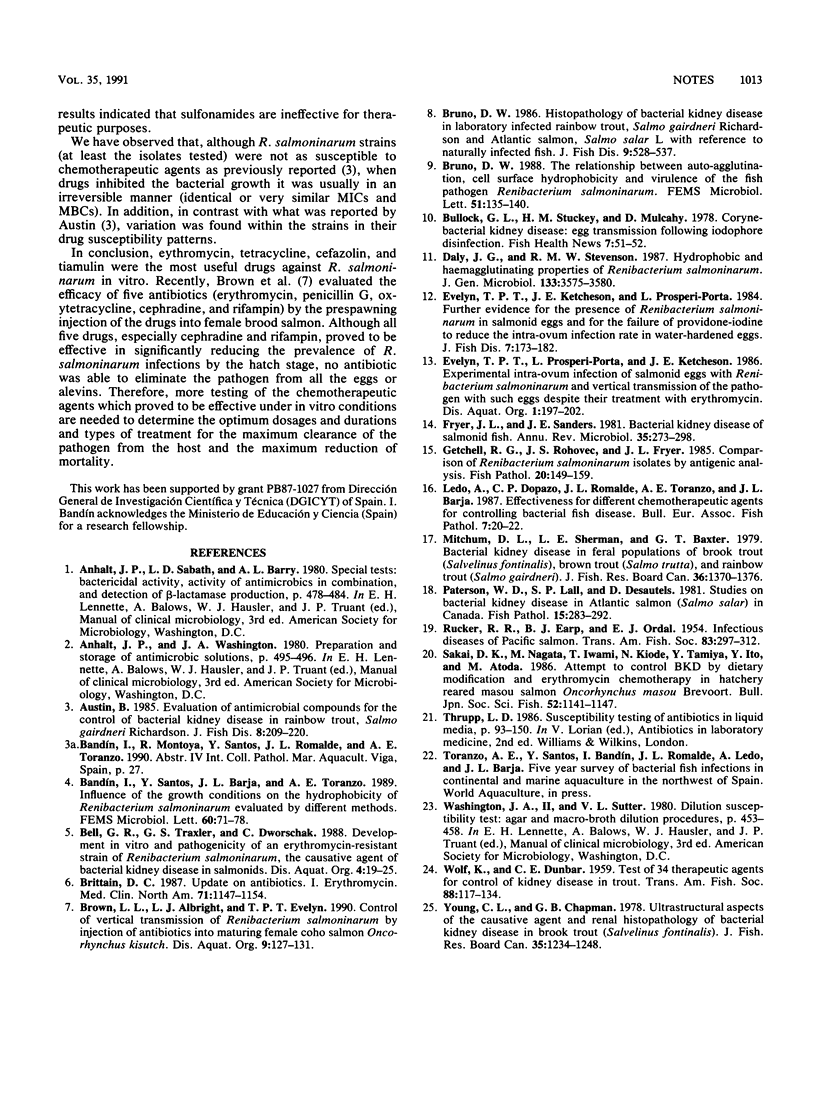Abstract
The efficacies of 21 chemotherapeutic agents for controlling bacterial kidney disease were evaluated. The bactericidal and/or bacteriostatic effects of these drugs were tested against 11 Renibacterium salmoninarum strains with different origins. The most effective compounds displaying both bacteriostatic and bactericidal activity for all the isolates were tetracycline and erythromycin, with MICs ranging from less than 0.62 to 10.95 micrograms/ml for tetracycline and from less than 0.62 to 5.47 micrograms/ml for erythromycin. Whereas tetracycline showed identical MICs and MBCs, erythromycin showed bactericidal effects at concentrations of 5.47 to 21.87 micrograms/ml. Similarly, cefazolin and tiamulin proved to be very effective bactericidal compounds against the majority of R. salmoninarum isolates, with MBCs for 90% of the strains tested of 21.87 and 10.95 micrograms/ml, respectively. Neither nitrofuranes, quinolones, nor sulfonamides showed inhibitory effects on the growth of the strains.
Full text
PDF


Selected References
These references are in PubMed. This may not be the complete list of references from this article.
- Bandín I., Santos Y., Barja J. L., Toranzo A. E. Influence of the growth conditions on the hydrophobicity of Renibacterium salmoninarum evaluated by different methods. FEMS Microbiol Lett. 1989 Jul 1;51(1):71–77. doi: 10.1016/0378-1097(89)90080-3. [DOI] [PubMed] [Google Scholar]
- Brittain D. C. Erythromycin. Med Clin North Am. 1987 Nov;71(6):1147–1154. doi: 10.1016/s0025-7125(16)30802-1. [DOI] [PubMed] [Google Scholar]
- Fryer J. L., Sanders J. E. Bacterial kidney disease of salmonid fish. Annu Rev Microbiol. 1981;35:273–298. doi: 10.1146/annurev.mi.35.100181.001421. [DOI] [PubMed] [Google Scholar]


